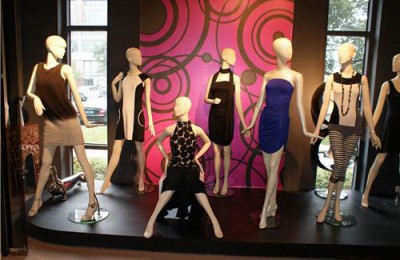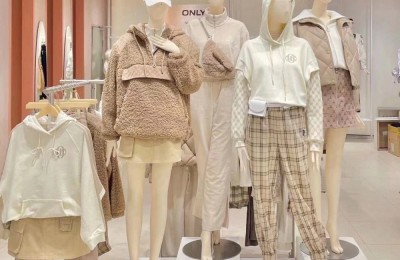34. What are the style characteristics of traditional varieties of silk fabrics?
Answer: The traditional varieties of silk fabrics can be divided into the following fourteen categories. The style characteristics of each category are as follows:
(1) Spinning category: refers to various filaments or filaments and short fiber yarns Interlaced plain weave fabric. The warp and weft filaments are generally not twisted, and are basically woven raw or partially dyed in the warp and weft, and then scouring, dyeing or printing to form floral, plain, or striped fabrics with a flat and dense silk surface and a light and soft texture. There are many varieties, including finished spinning and unfinished spinning made of artificial silk; power spinning and Fuchun spinning made of mulberry silk; color strip spinning and plaid spinning made of colored silk in the warp and weft parts. ; Interlacings of other two fibers are also useful.
(2) Damask type: floral and plain fabrics using twill weave as ground texture. The surface of the fabric has obvious twill texture, and the texture is light and thin. There are also medium and thin ones. Generally, single warp and single weft are used, pure weave or interlaced. Common ones are silk twill silk, double palace twill silk, etc.
(3) Satin: floral and plain fabrics using satin weave as the ground texture. The warp and weft yarns are generally not twisted (except for crepe satin, whose weft yarns are strongly twisted). The surface of the fabric is smooth and bright, and the hand feels soft. There are differences between raw weaving and cooked weaving, pure weaving and interlaced weaving. The products include floral satin (mulberry silk is used in the warp and rayon is used in the weft), plain satin (mulberry silk is used in the warp and rayon is used in the weft), silk satin (mulberry silk is used in both warp and weft), and rayon satin (mulberry silk is used in both warp and weft). (Viscose yarn), brocade satin (nylon yarn for warp, rayon for weft), etc.
(4) Crepe: Crepe silk fabric refers to silk fabrics that use fabric organization or use of strong twisting, different twist directions and other process conditions to make the surface of the fabric show a crepe effect. Commonly used raw materials are mulberry silk,
viscose silk and synthetic fiber silk. In the warp and weft directions, co-twisted yarn, counter-twisted yarn, crepe-twisted yarn, strong stretch yarn, elastic yarn, or by controlling the tension difference can be used; a joint weave can be used to use changes in the weave to cause different tightness of the spinning yarn. The difference in weaving shrinkage is formed, and then the fabric is finished after scouring, dyeing, printing, finishing, etc., so that the appearance of the fabric can obtain a crepe effect. For example, if the warp and weft are twisted in different directions and arranged at intervals of 2S and 2Z in the twist direction, it will become a georgette crepe fabric; if the warp and weft are twisted in different directions and arranged alternately in 2S and 2Z, it is called a fabric made of mulberry silk. It is crepe de chine; the weft yarn is made of two raw materials (mulberry silk and viscose yarn) and is woven into crepe silk, which is called industrial and agricultural crepe.
(5) Silk: The ground pattern adopts plain weave or various modified tissues, or mixes several basic tissues and modified tissues at the same time (except yarn, velvet and velvet tissues). It is a raw or cooked fabric with a tight texture, such as There are no distinctive features of other major categories of products, and they can usually be called silk fabrics. Common varieties include polyester floral silk, woven embroidered silk, double palace silk and double palace taffeta.
(6) Silk: Silk fabrics with plain or heavy plain weave, warp and weft colored first or partially colored, yarn-dyed or semi-dyed. Half-dyed fabrics also need to be over-dyed and finished in a single machine. The warp threads are generally twisted, while the weft threads are not twisted. There are also cases where both warp and weft threads are weakly twisted. The texture of the fabric is light and thin, the silk surface structure is tight and clean, and the hand feels crisp and smooth. Products such as taffeta with both warp and weft made of mulberry silk, Tianxiang silk woven with half-dyed mulberry silk and rayon, etc.
(7) Silk fabric: It adopts plain weave or heavy flat weave, the warp and weft density of the fabric is small, the texture is particularly light and transparent, and the silk surface has flowers with gauze-like holes, plain silk fabric. Generally, various filaments are used to weave pure or interlaced, the warp yarn is not twisted or low-twisted, and the weft yarn is medium-twisted.
(8) Thin type: plain weave is adopted, the warp is filament, cotton yarn or wax yarn is used as weft, the texture of the fabric is thicker, most of this kind of fabric is raw weaving. The products are varied. Such as No. 1, Waxian, etc.
(9) Pueraria: floral and plain silk fabrics made of plain weave, warp plain or sharp twill. Generally, the warp is fine and the weft is thick, the warp is dense and the weft is sparse. The surface of the fabric is less shiny and has obvious horizontal ridges of uniform thickness, resembling grosgrain. If the weft twill weave is used, the surface of the fabric will be satin-backed. Products such as Suwen Shangge, Huawen Shangge, Minghua Ge, etc.
(10) Luo type: It adopts Luo structure and has gauze holes on the surface of the fabric. There are two types of Luo: horizontal Luo and straight Luo. The twisted warp is twisted every three wefts or an odd number of wefts above three wefts, so that the yarn holes form obvious horizontal stripes on the surface of the fabric, which is called a horizontal stripe; the twisted yarn structure is used to form a row of yarn holes in the warp direction of the fabric, and each yarn hole is composed of The shape of equidistant or unequal straight bars is called Zhiluo. Commonly used raw materials for Luo fabrics include mulberry silk and synthetic filament, most of which are raw woven.
(11) Yarn type: The skein structure is adopted, and the skein is twisted once every other weft yarn. The surface of the gauze fabric has obvious, uniform and clear holes. The texture of the fabric is extremely light, thin and transparent, and it feels hard and crisp. The size and density of the yarn holes on the fabric surface depend on the warp and weft density and the arrangement ratio of the twisted warp and ground warp. The warp threads are mainly untwisted raw mulberry silk and synthetic monofilaments, most plain yarn fabrics are raw woven, and floral yarn fabrics are cooked woven.
(12) Velvet: The ground texture or pattern of the fabric adopts all or part of the raised tissue, or the floral or plain silk fabric is made into plush or terry through special processing methods. The products are available in single-layer or double-layer, and in warp pile and weft pile. The fabric fluff is mostly made of viscose silk. The warp and weft raw materials of the ground tissue include mulberry silk and viscose silk. Through different finishing processes, it can be made into standing velvet, inverted velvet, overcoat velvet, burnt-out velvet, etc. . Common varieties include� Its velvet, velvet (Zhang velvet), etc.
(13) This type: The warp or weft weave of crepe weave or short relief is used to make the fabric texture less lustrous and richer in texture, giving it a wooly feel. Such as suits, silk woolens, etc.
(14) Brocade: adopt twill, satin or various changes in texture. The warp and weft yarns are untwisted or weakly twisted, and the silk surface is a colorful and gorgeous woven jacquard fabric. The appearance is colorful, the patterns are exquisite and elegant, and the texture is thick, delicate and soft. In addition to silk and viscose silk, the raw materials can also be embellished with gold and silver threads to make the silk surface more magnificent. Silk and synthetic filaments can also be interlaced, and the heat shrinkage of synthetic filaments can be used to make the surface of the fabric have a distinct three-dimensional texture. Common products include Yun Brocade, Shu Brocade, Song Brocade, etc.
AAANHJJGHSFW
Disclaimer:
Disclaimer: Some of the texts, pictures, audios, and videos of some articles published on this site are from the Internet and do not represent the views of this site. The copyrights belong to the original authors. If you find that the information reproduced on this website infringes upon your rights, please contact us and we will change or delete it as soon as possible.
AA







